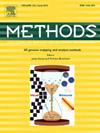DGSIST: Clustering spatial transcriptome data based on deep graph structure Infomax
IF 4.2
3区 生物学
Q1 BIOCHEMICAL RESEARCH METHODS
引用次数: 0
Abstract
Although spatial transcriptomics data provide valuable insights into gene expression profiles and the spatial structure of tissues, most studies rely solely on gene expression information, underutilizing the spatial data. To fully leverage the potential of spatial transcriptomics and graph neural networks, the DGSI (Deep Graph Structure Infomax) model is proposed. This innovative graph data processing model uses graph convolutional neural networks and employs an unsupervised learning approach. It maximizes the mutual information between graph-level and node-level representations, emphasizing flexible sampling and aggregation of nodes and their neighbors. This effectively captures and incorporates local information from nodes into the overall graph structure. Additionally, this paper developed the DGSIST framework, an unsupervised cell clustering method that integrates the DGSI model, SVD dimensionality reduction algorithm, and k-means++ clustering algorithm. This aims to identify cell types accurately. DGSIST fully uses spatial transcriptomics data and outperforms existing methods in accuracy. Demonstrations of DGSIST’s capability across various tissue types and technological platforms have shown its effectiveness in accurately identifying spatial domains in multiple tissue sections. Compared to other spatial clustering methods, DGSIST excels in cell clustering and effectively eliminates batch effects without needing batch correction. DGSIST excels in spatial clustering analysis, spatial variation identification, and differential gene expression detection and directly applies to graph analysis tasks, such as node classification, link prediction, or graph clustering. Anticipation lies in the contribution of the DGSIST framework to a deeper understanding of the spatial organizational structures of diseases such as cancer.
DGSIST:基于深度图结构的空间转录组数据聚类 Infomax.
虽然空间转录组学数据为了解基因表达谱和组织的空间结构提供了宝贵的视角,但大多数研究仅依赖于基因表达信息,对空间数据利用不足。为了充分利用空间转录组学和图神经网络的潜力,我们提出了 DGSI(深度图结构 Infomax)模型。这种创新的图数据处理模型使用图卷积神经网络,并采用无监督学习方法。它最大化了图层和节点层表征之间的互信息,强调节点及其邻居的灵活采样和聚合。这能有效捕捉节点的局部信息并将其纳入整体图结构中。此外,本文还开发了 DGSIST 框架,这是一种无监督细胞聚类方法,集成了 DGSI 模型、SVD 降维算法和 k-means++ 聚类算法。其目的是准确识别细胞类型。DGSIST 充分利用了空间转录组学数据,其准确性优于现有方法。DGSIST 在各种组织类型和技术平台上的能力展示表明,它能有效准确地识别多个组织切片中的空间域。与其他空间聚类方法相比,DGSIST 在细胞聚类方面表现出色,能有效消除批次效应,无需批次校正。DGSIST 在空间聚类分析、空间变异识别和差异基因表达检测方面表现出色,并可直接应用于节点分类、链接预测或图聚类等图分析任务。我们期待 DGSIST 框架能为深入了解癌症等疾病的空间组织结构做出贡献。
本文章由计算机程序翻译,如有差异,请以英文原文为准。
求助全文
约1分钟内获得全文
求助全文
来源期刊

Methods
生物-生化研究方法
CiteScore
9.80
自引率
2.10%
发文量
222
审稿时长
11.3 weeks
期刊介绍:
Methods focuses on rapidly developing techniques in the experimental biological and medical sciences.
Each topical issue, organized by a guest editor who is an expert in the area covered, consists solely of invited quality articles by specialist authors, many of them reviews. Issues are devoted to specific technical approaches with emphasis on clear detailed descriptions of protocols that allow them to be reproduced easily. The background information provided enables researchers to understand the principles underlying the methods; other helpful sections include comparisons of alternative methods giving the advantages and disadvantages of particular methods, guidance on avoiding potential pitfalls, and suggestions for troubleshooting.
 求助内容:
求助内容: 应助结果提醒方式:
应助结果提醒方式:


